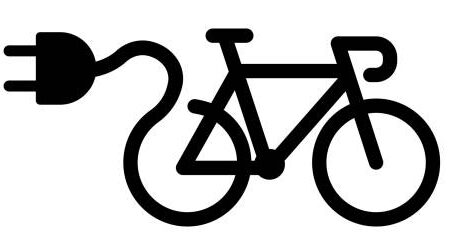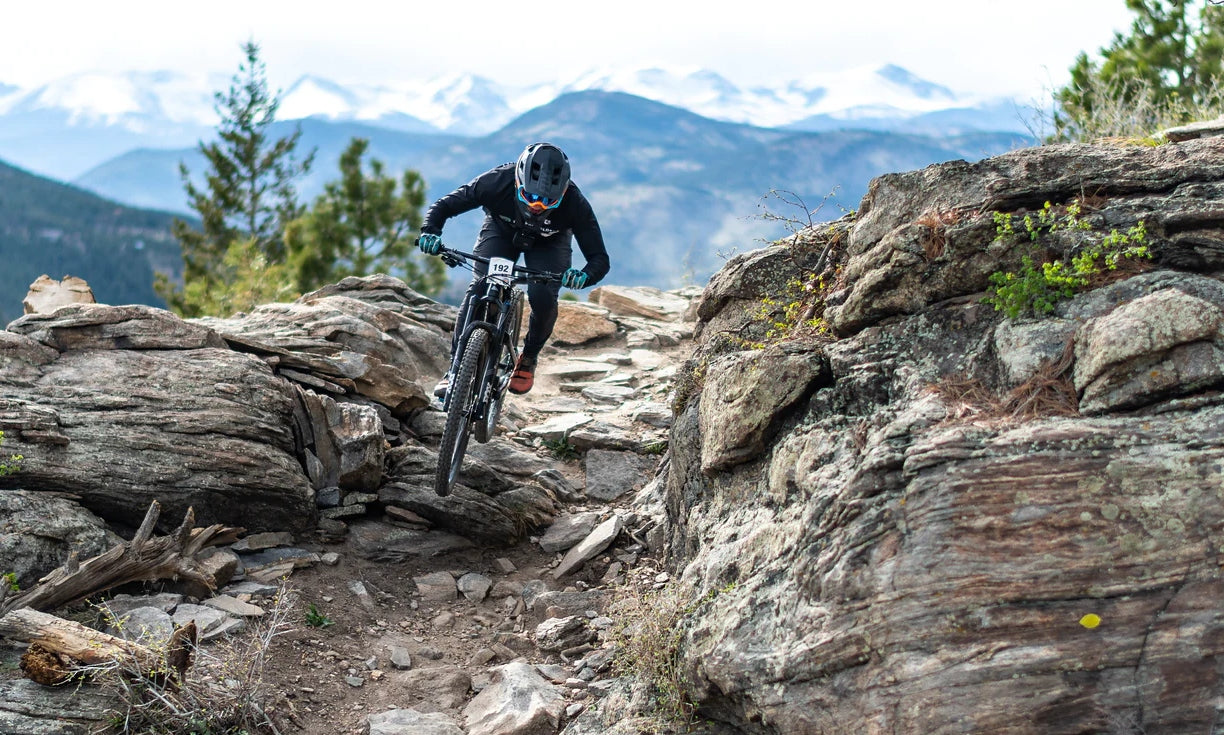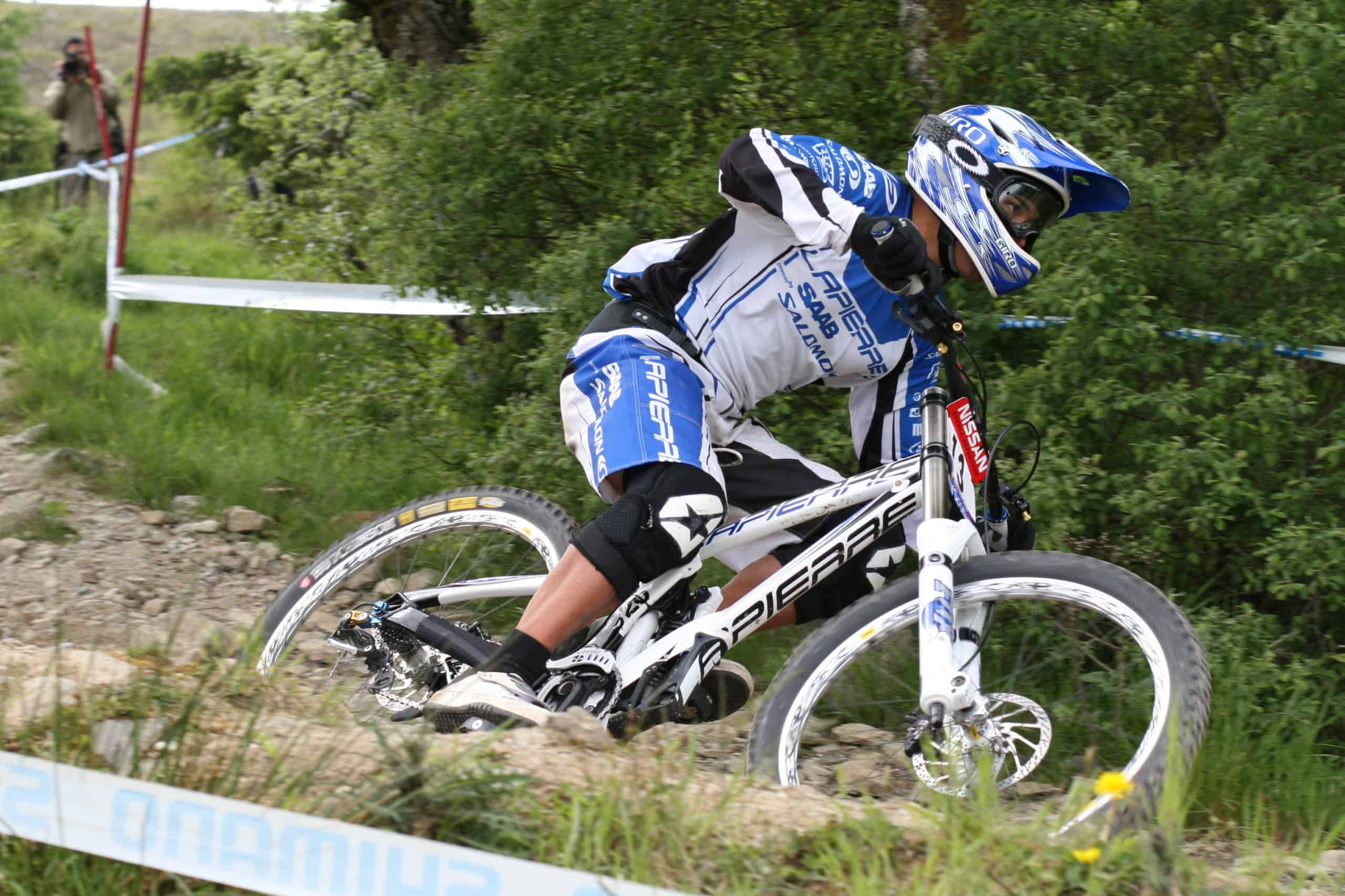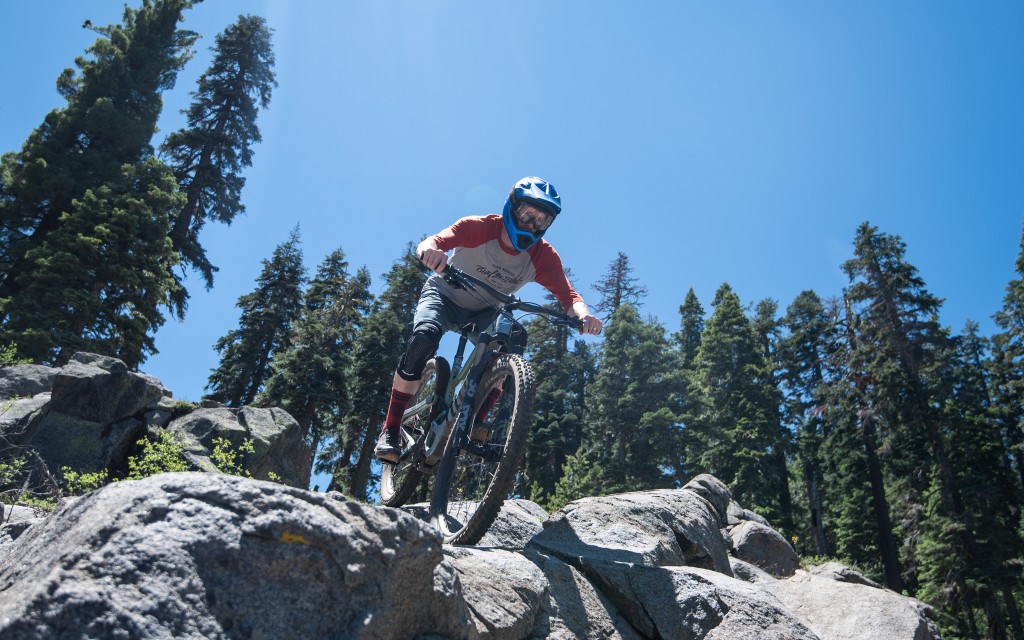Understanding the Different Types of MTB Face Protection
When selecting a mountain bike face protector, understanding the available options is crucial. These range from full face helmets, offering the most comprehensive protection, to open face helmets with removable chin bars, providing versatility, and trail helmets, designed for general riding. Each type caters to different riding styles and safety needs. A full face helmet is the gold standard when maximum protection is needed, making it the top choice for downhill and enduro riders. The best full face MTB helmet provides complete coverage of the head and face, including the chin and jaw, crucial for high-speed crashes and aggressive terrain.
Open face helmets with removable chin bars offer a compromise. They allow riders to adapt their helmet based on the trail. With the chin bar attached, they provide increased protection similar to a full face helmet. Without the chin bar, they offer the ventilation and freedom of an open face helmet. Trail helmets, on the other hand, prioritize ventilation and comfort for general trail riding. While they offer good protection against impacts, they do not provide the same level of facial coverage as full face options. Therefore, trail helmets are not usually considered as best full face MTB helmet alternatives. Selecting the right helmet depends heavily on the type of riding you do.
Prioritizing safety is paramount when choosing a mountain bike helmet. Riders should carefully assess their riding style, the types of trails they frequent, and the potential risks involved. Investing in the best full face MTB helmet appropriate for the intended use can significantly reduce the risk of serious injury. Whether you are a seasoned downhill racer or an occasional trail rider, understanding the strengths and limitations of each helmet type is essential for making an informed decision. Ultimately, a well-chosen helmet is an investment in your safety and well-being on the mountain.
How to Find a Comfortable and Secure Mountain Bike Helmet
Achieving a comfortable and secure fit is paramount when selecting the best full face mtb helmet. This ensures both optimal protection and enjoyable performance on the trails. The process begins with accurately measuring your head circumference. Use a flexible measuring tape and wrap it around your head, positioning it about one inch above your eyebrows and ears. This measurement, typically in centimeters or inches, will correspond to a specific helmet size range. Always consult the manufacturer’s sizing chart for the particular best full face mtb helmet you are considering, as sizes can vary between brands and models.
Once you have determined the appropriate size, it’s time to try on the helmet. Loosen all straps before placing the helmet on your head. The helmet should sit level on your head, covering your forehead. Adjust the retention system, usually a dial at the back of the helmet, to achieve a snug but comfortable fit. The helmet should not move excessively from side to side or front to back when you shake your head. Next, adjust the chin strap. It should be snug enough to prevent the helmet from coming off during a crash, but not so tight that it restricts breathing or feels uncomfortable. A good rule of thumb is that you should be able to fit one or two fingers between the strap and your chin. Pay attention to the cheek pads; they should make contact with your cheeks without causing excessive pressure.
Proper ventilation is also crucial for comfort, especially during strenuous rides. Ensure that the vents are not obstructed by hair or other objects. Move around and simulate riding conditions to check for any pressure points or areas of discomfort. Common issues include helmet wobble, which indicates a loose fit, or pressure points, which may require adjusting the internal padding or trying a different helmet shape. Remember that the best full face mtb helmet is one that fits well and feels comfortable for extended periods. Take your time during the fitting process, and don’t hesitate to try on multiple helmets until you find the perfect fit. Prioritize safety, comfort, and ventilation to enhance your riding experience.
Evaluating the Safety Features of Full Face Mountain Bike Helmets
When selecting the best full face mtb helmet, understanding safety certifications is paramount. Helmets undergo rigorous testing to meet standards like ASTM F1952 (downhill mountain biking), and CPSC (general use). These certifications indicate the helmet’s ability to withstand specific impact forces. The ASTM F1952, for instance, involves more severe impact tests than CPSC, making it a relevant standard for aggressive riding styles. It’s important to verify that the best full face mtb helmet you consider has passed these certifications, demonstrating a commitment to rider safety.
Beyond basic certifications, innovative safety technologies greatly enhance a best full face mtb helmet’s protective capabilities. MIPS (Multi-directional Impact Protection System) is a notable example. MIPS allows the helmet’s outer shell to rotate independently of the head during an angled impact. This reduces the rotational forces transmitted to the brain, potentially minimizing the risk of concussion. Other rotational impact protection technologies exist, each designed to mitigate the effects of angled impacts. Exploring these features ensures you’re getting a best full face mtb helmet designed with advanced safety in mind. When comparing helmets, prioritize those incorporating these technologies for optimal protection.
Impact protection is not just about certifications and advanced systems; it also involves the materials and construction of the helmet. Look for a best full face mtb helmet with a multi-density EPS (Expanded Polystyrene) liner. This type of liner uses varying densities of foam to absorb impact energy more effectively across a wider range of impact speeds. The outer shell material also plays a role. Polycarbonate shells are common, while some high-end helmets use carbon fiber or composite materials for increased strength and reduced weight. Thoroughly evaluating the construction and materials ensures you’re choosing a best full face mtb helmet built to withstand the rigors of mountain biking and provide superior impact protection when needed.
Bell Full 9 and Fox Proframe: A Comparison of Top-Rated Options
Selecting the best full face MTB helmet involves careful consideration of features, fit, and intended use. The Bell Full 9 and the Fox Proframe stand out as leading choices in the full face mountain bike helmet category, each designed to cater to specific rider preferences and riding styles. A detailed comparison reveals their strengths and weaknesses, guiding riders toward an informed decision for optimal safety and performance on the trails.
The Bell Full 9 excels as a robust downhill helmet, prioritizing maximum protection. Its construction features a fiberglass shell and a MIPS energy management system, enhancing impact absorption. Ventilation, while present, is less prominent compared to the Proframe, reflecting its focus on all-out protection for high-speed descents. The Full 9 incorporates features like an Overbrow Ventilation system and magnetic cheek pads for ease of removal in emergency situations. However, its weight is a factor to consider, potentially causing fatigue on longer rides. The Fox Proframe, conversely, targets enduro and trail riders seeking a lightweight and highly breathable best full face MTB helmet. Weighing considerably less than the Full 9, the Proframe boasts an integrated chin bar, meeting ASTM downhill certification standards. Its ventilation system is exceptional, featuring numerous vents that promote airflow and keep the rider cool during intense climbs and descents. The Proframe’s lightweight design enhances comfort and reduces fatigue, making it an ideal choice for all-day riding. While offering excellent ventilation and comfort, the Proframe’s protection level is slightly less than the Bell Full 9, reflecting its design focus on balancing safety and breathability. Choosing between these two best full face MTB helmet options requires careful evaluation.
Ultimately, the choice between the Bell Full 9 and the Fox Proframe hinges on riding style and priorities. If downhill riding and maximum protection are paramount, the Bell Full 9 is the preferred choice, offering robust construction and advanced safety features. For enduro and trail riders who value lightweight comfort and exceptional ventilation, the Fox Proframe emerges as the superior option, delivering a balanced blend of protection and breathability. Riders should prioritize trying on both helmets to assess fit and comfort, ensuring the chosen best full face MTB helmet meets their individual needs and preferences. Both helmets represent top-tier options in the best full face MTB helmet market, each engineered to elevate the riding experience while prioritizing safety.
The Importance of Ventilation in Full Face Mountain Bike Helmets
Good ventilation is paramount in a full face helmet, particularly for demanding disciplines like enduro and downhill mountain biking. Riding uphill or pushing limits generates significant heat. A best full face mtb helmet with poor ventilation quickly becomes uncomfortable, impacting performance and focus. Effective ventilation helps regulate body temperature, preventing overheating and excessive sweating. Overheating leads to decreased concentration, increased fatigue, and potentially dangerous situations on the trail. A well-ventilated helmet keeps the rider cooler and drier, enhancing comfort and allowing them to perform at their best.
Ventilation designs vary significantly between different best full face mtb helmet models. Some helmets feature numerous small vents strategically placed to maximize airflow. Others utilize larger vents with internal channeling to direct air across the head. The effectiveness of a ventilation system depends on several factors, including the size and placement of the vents, the internal channeling design, and the overall helmet shape. Some helmets also incorporate adjustable vents, allowing riders to fine-tune the airflow based on riding conditions and personal preference.
Features that contribute to better airflow in a best full face mtb helmet include large intake vents at the front, exhaust vents at the rear, and internal channels that promote air circulation. The padding material also plays a role in ventilation. Moisture-wicking pads help to draw sweat away from the skin, keeping the rider cooler and drier. When choosing a best full face mtb helmet, consider the ventilation design and features to ensure optimal comfort and performance, especially during intense rides. The goal is to find a balance between protection and breathability. Some best full face mtb helmet sacrifices some level of protection in favor of improved airflow, so evaluate what is more important for the type of riding you plan to do.
Considering Weight and Aerodynamics in Mountain Bike Helmet Selection
Weight plays a significant role in a rider’s experience, particularly during long enduro stages or extended downhill runs. A heavier helmet can contribute to rider fatigue, impacting overall performance and enjoyment. Conversely, a lighter helmet minimizes strain on the neck and shoulders, allowing riders to maintain focus and energy. When selecting the best full face mtb helmet, riders should carefully consider the weight specifications provided by manufacturers and assess how it aligns with their riding style and endurance levels. The best full face mtb helmet options often strike a balance between robust protection and a lightweight design.
Aerodynamics, while perhaps less critical than weight for many mountain bikers, becomes increasingly important at higher speeds, especially in downhill racing. A well-designed, aerodynamic helmet can reduce drag, enhancing stability and allowing riders to maintain speed more efficiently. The shape and profile of the helmet, along with features like integrated visors and smooth surfaces, can contribute to improved aerodynamic performance. Manufacturers often conduct wind tunnel testing to optimize the aerodynamic properties of their helmets. For riders focused on maximizing speed and efficiency, selecting the best full face mtb helmet with attention to aerodynamic design is crucial. Finding the best full face mtb helmet involves considering how aerodynamics complements other factors.
The ideal full face mtb helmet represents a careful balance between weight, protection, and ventilation. Lighter helmets may compromise slightly on impact absorption, while heavily armored helmets can feel cumbersome and lead to overheating. Similarly, prioritizing aerodynamics might necessitate sacrificing some ventilation. The best full face mtb helmet models often employ advanced materials and construction techniques to optimize these competing factors. For example, carbon fiber shells offer excellent strength-to-weight ratios, while strategically placed vents promote airflow without compromising structural integrity. Ultimately, the optimal choice depends on individual priorities and the specific demands of the intended riding discipline. Riders should weigh the trade-offs and select a helmet that provides the best overall performance and protection for their needs. The best full face mtb helmet is one that meets the rider’s specific requirements without compromising safety or comfort.
Maintaining and Caring for Your Full Face Mountain Bike Helmet
Proper maintenance of a full face mountain bike helmet is crucial for prolonging its lifespan and ensuring its continued protective capabilities. Regular cleaning, careful inspection, and appropriate storage are key aspects of helmet care. Cleaning the best full face mtb helmet involves using mild soap and water. Harsh chemicals or solvents can degrade the helmet’s shell and EPS liner. After washing, allow the helmet to air dry completely away from direct sunlight or heat sources, as these can also cause damage. The padding inside the best full face mtb helmet can be removed and washed separately to maintain hygiene.
Regular inspection of the best full face mtb helmet is also vital. Before each ride, check for cracks, dents, or any signs of damage to the shell, EPS liner, and straps. Pay close attention to the areas around vents and attachment points. If any damage is detected, the helmet should be replaced immediately, even if it seems minor. A seemingly small crack can significantly compromise the helmet’s ability to absorb impact in the event of a crash. Remember that the EPS liner is designed to compress upon impact, and once it has done so, it will not offer the same level of protection again. After a significant impact, replacing the best full face mtb helmet is always recommended, regardless of visible damage.
Proper storage is another essential aspect of maintaining a full face mountain bike helmet. Avoid storing the best full face mtb helmet in direct sunlight, extreme temperatures, or in areas where it could be exposed to chemicals or solvents. These conditions can degrade the helmet’s materials over time, reducing its effectiveness. A cool, dry place is ideal for storage. When not in use, consider storing the helmet in a helmet bag or protective case to prevent scratches and dings. Handle the best full face mtb helmet with care, avoiding dropping or throwing it, as this can also cause unseen damage. By following these maintenance and care tips, riders can ensure that their best full face mtb helmet continues to provide the best possible protection for many rides to come.
Exploring Budget-Friendly Full Face MTB Helmet Options
Finding the best full face MTB helmet doesn’t always require breaking the bank. Several affordable options provide a solid level of protection and essential features for mountain bikers on a budget. While these helmets might not boast all the bells and whistles of their higher-end counterparts, they still meet crucial safety standards and offer a valuable entry point into full-face protection. When selecting a budget-friendly option, it’s important to carefully consider the trade-offs between price and performance. Look for helmets that have passed safety certifications like ASTM F1952 or CPSC, ensuring they offer adequate impact protection. Prioritize fit and comfort, even in a more affordable model, as a well-fitting helmet is crucial for both safety and performance. A well-chosen, budget-conscious helmet is a smart step for riders seeking enhanced safety without overspending. Investing in the best full face MTB helmet for your budget allows you to ride with greater confidence.
Several brands offer excellent value in the affordable full face MTB helmet category. Consider models from brands known for producing reliable gear at accessible price points. These helmets often utilize durable materials and incorporate essential safety features like extended coverage and impact-absorbing liners. Ventilation might be less sophisticated compared to premium helmets, but many budget-friendly options still provide adequate airflow to prevent overheating. Weight might also be a factor, with some affordable helmets being slightly heavier than their high-end counterparts. However, the added weight is often a worthwhile trade-off for the increased protection and affordability. Always research and read reviews to gain insights into the real-world performance and durability of different models before making a purchase. The best full face MTB helmet is one that fits well, meets safety standards, and aligns with your riding style and budget.
Ultimately, prioritizing safety is paramount, even when choosing a budget-friendly full face MTB helmet. Don’t compromise on essential safety features to save a few dollars. A certified helmet, even an affordable one, provides significantly more protection than riding without any face protection. Before committing to a specific model, ensure it fits properly and feels comfortable. A helmet that fits poorly won’t provide optimal protection in the event of a crash. While exploring budget options, remember to balance price with performance and prioritize safety above all else. By making informed choices, riders can find an affordable best full face MTB helmet that offers peace of mind and allows them to enjoy their mountain biking adventures with confidence. It’s about finding the sweet spot where protection, comfort, and affordability intersect. Choosing the best full face MTB helmet for you also allows you to progress your skills with the upmost confidence.




